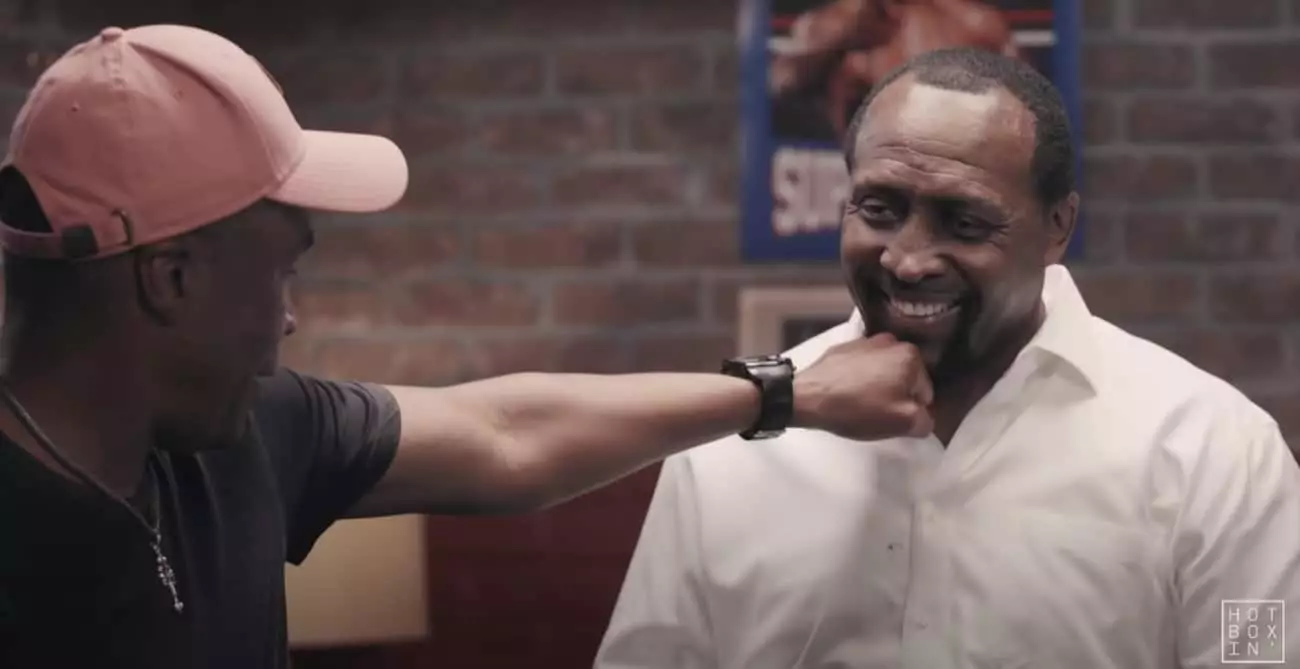On September 16, 1981, boxing fans were treated to a match that would etch itself into the annals of the sport’s history as one of the finest encounters ever. The welterweight clash between Sugar Ray Leonard and Thomas “Hitman” Hearns at Caesars Palace brought together two champions at the peak of their prowess, ready to put their legacies on the line. It was more than just a title fight; it was a confrontation between two riveting personalities who embodied the spirit of their era. In a sport where rivalries often produce memorable moments, this particular bout notable for its blend of skill, strategy, and surprising intensity set a golden standard.
The unmatched aspiration of both fighters illustrated a significant ethos within the sporting community—when true competitors face off, the outcome is a testament to their character and determination. Leonard and Hearns, both rising stars eager to prove their worth and claim supremacy, ensured that they would meet rather than divert. This choice to engage with one another reflected not only their inherent talent but also their mutual respect, enhancing the drama of the impending showdown.
The build-up to the fight revealed stark contrasts in the preparation and psychology of the two titleholders. While Hearns entered the ring having shed weight under the watchful eye of his renowned trainer Emanuel Steward, he weighed in at a surprisingly low 143 pounds, raising questions about his readiness. In contrast, Leonard, prepared by the seasoned Angelo Dundee, showcased his complete fitness, benefitting from extensive experience in high-stakes encounters. This disparity would prove instrumental as the fight unfolded.
From the outset, Hearns established a strategic advantage with his reach and jab, showcasing a calm and controlled approach. His performance mirrored a chess match, utilizing ring generalship and keen awareness to accumulate points. Early on, it appeared that Hearns might dominate the narrative, exploiting a tactical game plan that allowed him to score during the opening five rounds. Leonard, however, with his innate resilience, understood that boxing is not just a physical contest but a mental one, enabling him to absorb the early pressure while biding his time.
As the fight progressed into the sixth round, the atmosphere shifted dramatically. Leonard’s counter left stunned Hearns and marked a pivotal turning point. This moment shifted the tide, transforming Leonard from the underdog into the aggressor, thereby altering the trajectory of the match entirely. Fans holding onto their hopes for Hearns were sent into a collective gasp as the fight turned into a dramatic showcase of wills, where the lines between intelligence and instinct blurred.
From that point forward, Leonard did not shy away from the boldness needed for greatness. The once-dominant Hearns found himself on the defensive, showcasing his boxing skills in a desperate bid to recover from the onslaught. Leonard’s determination and ferocity became palpable as he poured everything into each ensuing round. Though Hearns initially enjoyed the numerical edge on the scorecards, boxing often hinges on moments of revelation that can flip a narrative.
Encouraged by a passionate crowd, Leonard intensified his efforts and refused to cower in the face of adversity. As both fighters approached the later rounds, it became clear that the battle was not merely won by points but by heart. The legendary motivational words from Dundee in Leonard’s corner rang loud, exhorting him to seize victory when it mattered most. In round 13, Leonard’s urgency culminated in a relentless barrage that resulted in Hearns hitting the canvas—twice, though only one knockdown was recognized. The tension reached unbearable heights as the champion’s resolve faltered against the force of a superseding challenger.
Ultimately, the bout culminated in round 14, where Hearns could no longer withstand the pressure. Referee Davy Pearl stepped in, halting the fight to the dismay of some spectators who felt the decision came too early. However, in that decisive moment, the boxing world witnessed Leonard ascend to the pinnacle of pound-for-pound distinction, while Hearns, for all his earlier success, faced the uncomfortable reality of his limits that night.
The chronicle of Leonard vs. Hearns represents more than a singular event; it encapsulates the essence of competitive spirit and the unpredictability of boxing. Their fierce battle resonated across generations, presenting an indelible lesson about the nature of rivalry, courage, and the quest for greatness. Eight years later, they would step into the ring once more, but their initial clash remained the definitive chapter in their story, capturing the imaginations of both casual fans and die-hard aficionados alike.
In a sport often punctuated by caution and calculated risks, Leonard and Hearns’ showdown continues to be a beacon for what happens when two titans meet with everything at stake. In that sacred squared circle, they not only crafted a legacy of their own but also reignited the passion of boxing fans, reminding the world why the prizefight remains one of the purest forms of athletic competition.

